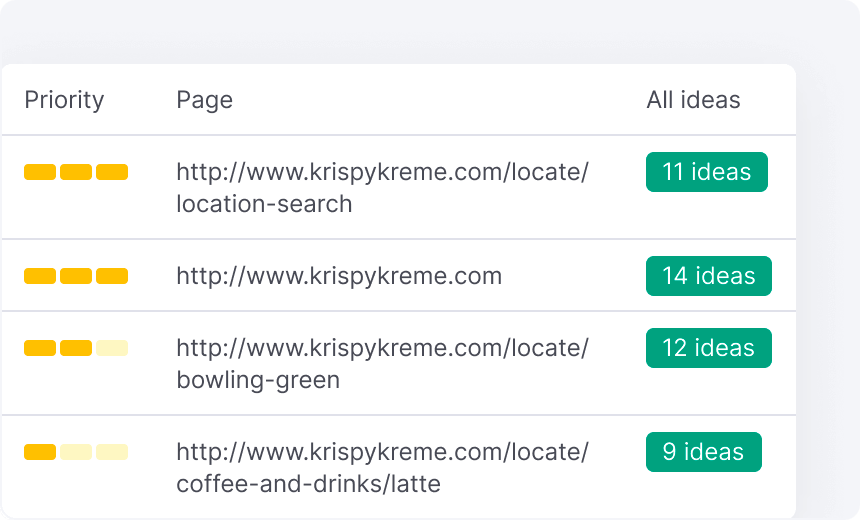Recognizing What Is Not Considered a Default Medium in Google Analytics: Insights
Recognizing What Is Not Considered a Default Medium in Google Analytics: Insights
Blog Article
Revealing the Unconventional Mediums in Google Analytics Beyond Default Settings
In the world of electronic analytics, Google Analytics stands as a cornerstone for businesses seeking to recognize their online visibility. While default setups use valuable understandings, real depth of understanding depend on checking out the non-traditional tools that usually go unnoticed. By venturing past the surface area and diving right into the complexities of social media sites information, email project performance, reference traffic sources, direct website traffic patterns, and personalized channel groupings, a bonanza of information awaits those ready to embrace an extra nuanced technique. Nevertheless, what exists below these unusual tools might simply redefine just how organizations view and plan their on the internet campaigns.

Leveraging Social Network Insights
Occasionally forgotten, yet tremendously valuable, is the practice of leveraging social media sites understandings within the realm of Google Analytics. By integrating data from platforms like Facebook, Twitter, Instagram, and LinkedIn into Google Analytics, organizations can acquire a much deeper understanding of their target market and the performance of their social media sites campaigns.
Through this integration, marketing experts can track and assess customer actions on their website that stems from social networks platforms. They can identify which social media sites networks are driving the most traffic, which material is reverberating with the target market, and which campaigns are converting the most leads. This understanding allows for data-driven choices to maximize social media strategies and enhance total advertising efficiency.
In addition, by incorporating social media insights with Google Analytics, organizations can produce much more targeted and customized campaigns - what is not considered a default medium in google analytics. They can make use of group information, interests, and online habits collected from social networks to improve their target market segmentation and supply customized messages that reverberate with certain consumer teams. This targeted strategy can bring about greater engagement, enhanced conversions, and ultimately, boosted return on financial investment
Uncovering Email Project Efficiency
Uncovering Email Campaign Performance involves examining crucial metrics and performance indicators to examine the efficiency of e-mail marketing initiatives. When delving right into email campaign performance, it is crucial to assess metrics such as open prices, click-through prices, conversion prices, and unsubscribe rates. Open prices show the percentage of recipients who opened up the e-mail, giving understanding into the effectiveness of subject lines and sender names. Click-through rates determine the percentage of recipients who clicked links within the email, showing engagement degrees. Conversion rates track the percentage of recipients who finished a preferred activity after clicking on a link in the email, such as making an acquisition or authorizing up for an e-newsletter. Unsubscribe rates highlight the number of recipients who chose out of getting further e-mails, losing light on email material top quality and importance. By examining these metrics, marketers can adjust their email advocate better engagement and efficiency.
Studying Recommendation Website Traffic Resources
After assessing the performance of email projects with essential metrics such as open prices and conversion rates, the next crucial action is evaluating recommendation traffic sources in Google Analytics to comprehend where internet site visitors are originating from and exactly how they interact with the site. Reference website traffic sources refer to the internet special info sites that route users to your website with clickable links. By diving right into this data, services can get understandings into which outside systems are driving traffic to their website, whether it be social media sites platforms, companion sites, or on the internet directory sites.
It helps businesses recognize high-performing reference resources that contribute considerably to web site traffic and conversions. Google Analytics uses comprehensive reports on recommendation website traffic, allowing companies to track the performance of each referral source accurately and make data-driven decisions to enhance their online presence.
Checking Out Straight Web Traffic Patterns
Exploring the direct website traffic patterns in Google Analytics provides important insights right into customer behavior and the efficiency of projects - what is not considered a default medium in google analytics. Straight traffic refers to visitors who arrive on an internet site by directly typing the URL into their web browser, utilizing book marks, or clicking untagged web links. Understanding direct traffic patterns can help marketing professionals review the influence of offline marketing efforts, brand acknowledgment, and the effectiveness of word-of-mouth referrals
By delving into straight website traffic information, organizations can reveal crucial information about user intent and brand name commitment. Assessing the actions of straight site visitors, such as the pages they go to, the time spent on website, and the conversion price, can give a much deeper understanding navigate to this website of individual interaction and the overall effectiveness of the website in converting site visitors into customers.
Furthermore, tracking straight traffic patterns with time permits organizations to identify trends, seasonality results, and the success of specific projects or promos in driving straight sees. This information can then be utilized to fine-tune marketing techniques, enhance website content, and enhance the general customer experience to take full advantage of conversions.
Making Use Of Personalized Network Groupings
Making use of custom-made network groupings in Google Analytics allows companies to categorize and examine their web site traffic based upon certain standards, offering valuable insights for enhancing marketing techniques. Custom channel collections enable firms to create their very own customized collections of web traffic sources, such as social networks, organic search, email projects, and recommendation web traffic. By defining these groupings, services can get a deeper understanding of just how different advertising and marketing networks add to their website traffic and conversions.
This function is specifically valuable for organizations with diverse marketing approaches throughout numerous platforms. A company running both paid and organic social media projects can distinguish between the 2 to evaluate their private performance properly. Furthermore, personalized channel groups can aid identify any type of neglected or undervalued website traffic sources that might be driving important involvement.
Final Thought

By venturing beyond the surface and diving into the details of social media information, email project performance, recommendation web traffic sources, straight website traffic patterns, and personalized network groups, a prize chest of info awaits those ready to embrace an extra nuanced approach. They can identify which social media channels are driving the most traffic, which content is resonating with the audience, and which campaigns are converting the most leads.After reviewing the efficiency of email campaigns via key metrics such as open prices and conversion prices, additional hints the following vital action is evaluating referral website traffic sources in Google Analytics to recognize where internet site visitors are coming from and exactly how they interact with the website. Personalized channel groups allow firms to produce their own personalized groupings of web traffic resources, such as social media, organic search, e-mail campaigns, and reference website traffic. By leveraging social media insights, discovering e-mail campaign performance, evaluating referral website traffic resources, exploring direct web traffic patterns, and making use of customized network groups, online marketers can acquire useful understandings into their on the internet presence.
Report this page